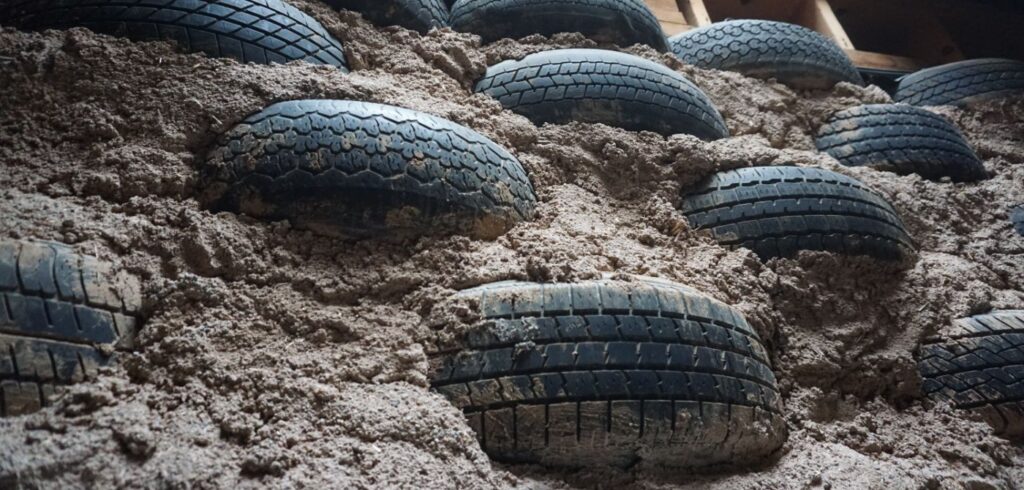A study which tested and verified the structural integrity of walls constructed using end-of-life tires filled with earth has been conducted by The University of South Australia (UniSA). The study’s positive results could provide new opportunities for reusing old tires within the construction sector.
Until now, there has been no strong data recorded on the use of tires for construction which has resulted in a limited use of the end-of-life product by architects and engineers. A UniSA team consisting of Yachong Xu, Martin Freney, Reza Hassanli, Yan Zhuge, Mizanur Rahman and Rajibul Karim, and supported by Tyre Stewardship Australia, assessed the structural integrity of a test tire wall to evaluate how it performed under various conditions.
Dr Martin Freney explained the wall was as structurally sound as conventional walls used in residential applications: “The wall we tested was the first of its kind to be scientifically tested in this fashion, and all the data indicates tire walls can be extremely strong and safe structures. While that structural integrity has been observed for many years in applications such as the retaining walls in earth-sheltered, earthship homes, the lack of supporting data has prevented wider uptake of tire walls by engineers and architects, and we’re hoping this study will change that and expand the range of projects in which these walls are used.”
Dr Freney explained there are many characteristics of the tire wall structures which could provide additional benefits, such as for retaining walls and other traditional building techniques.
“Not only are the tire walls as structurally sound as concrete or wood sleeper retaining walls, but they are also extremely resilient,” said Freney. “Unlike a concrete wall, we found these walls have the ability to ‘bounce back into shape’ following impact, such as from an earthquake. And, if a drainage material such as recycled concrete rubble or crushed bricks is used to fill the tires, they also offer excellent drainage, which can be a major consideration in many retaining wall scenarios. Furthermore, the use of recycled fill materials reduces the environmental impact of the wall.”
In addition to the real-world test wall, UniSA PhD candidate Yachong Xu designed software models as part of the study that enable the data obtained from the study to be extrapolated to other designs.
“We really believe this research provides a strong evidence base for the expanded use of tire walls in housing and other applications, and the next step will be to engage with an industry partner to develop a range of real-world applications for tire walls,” concluded Dr Freney.



